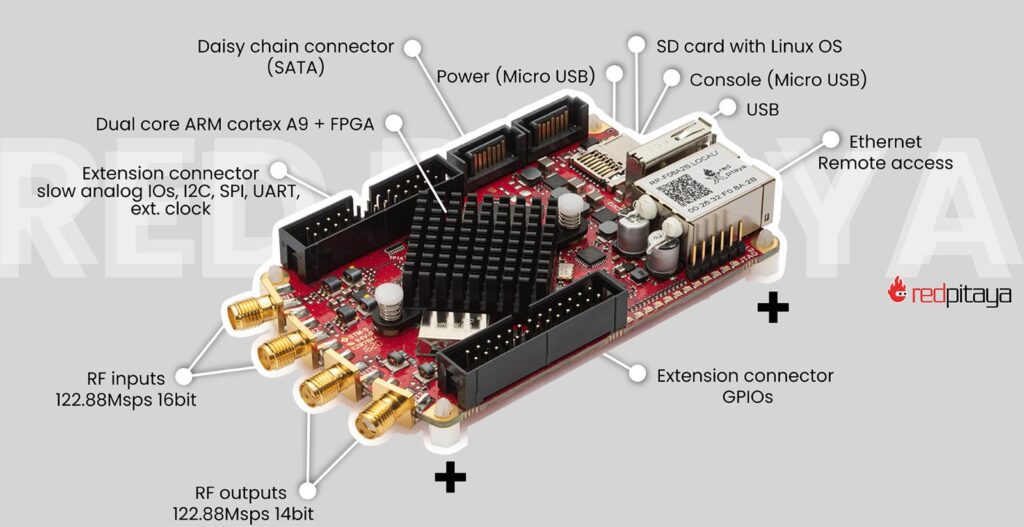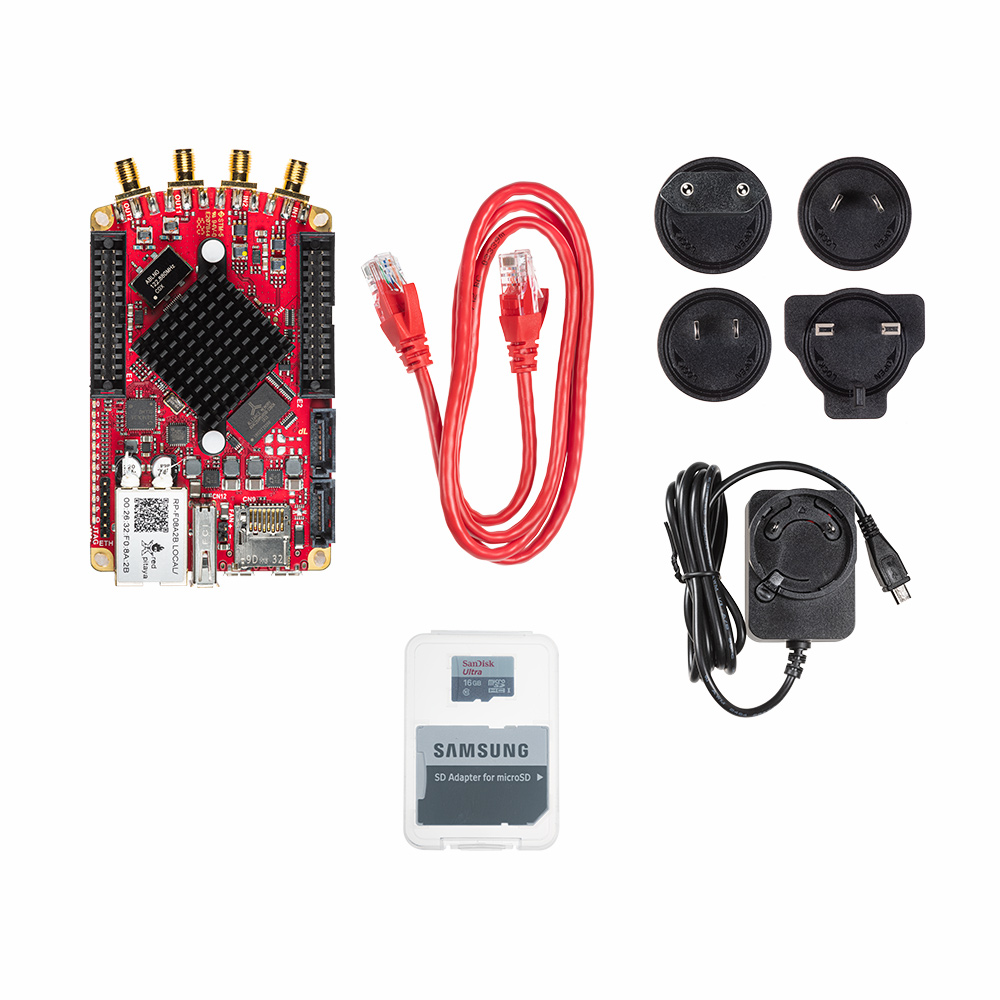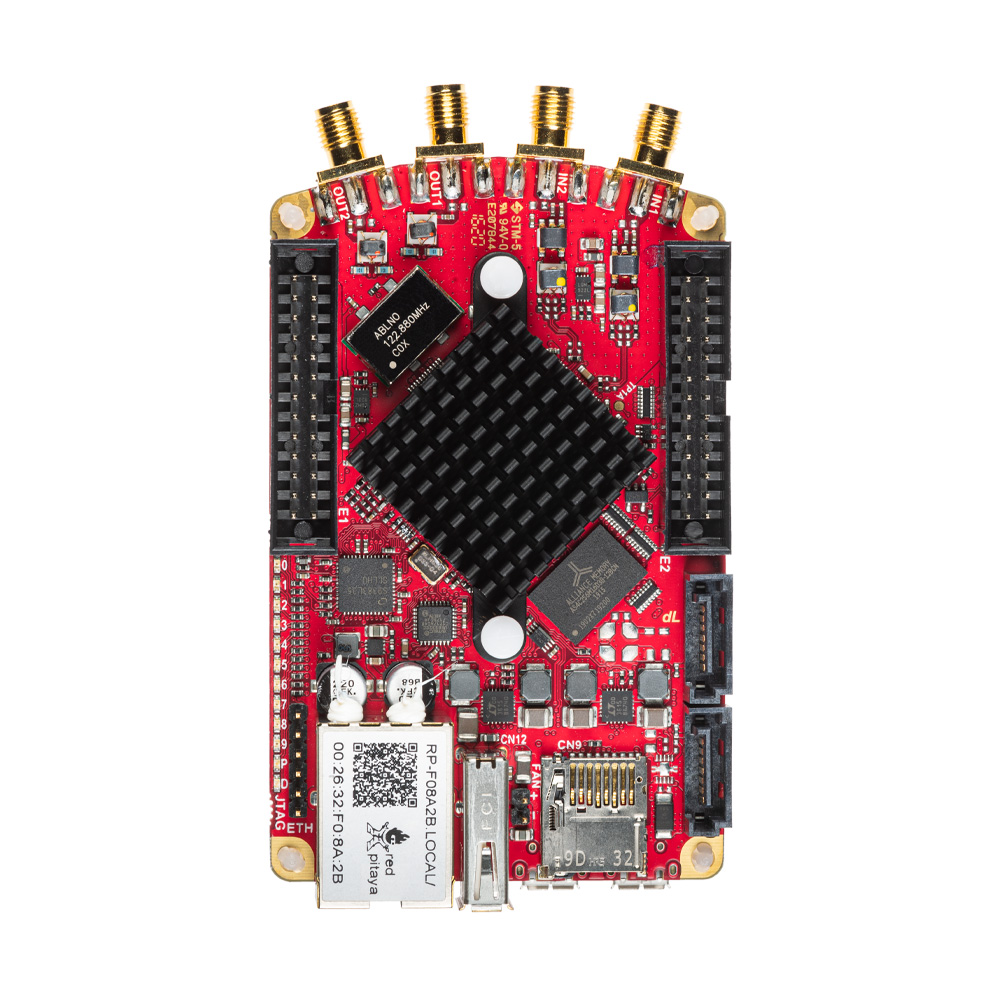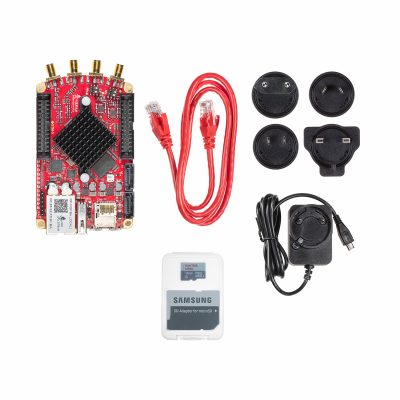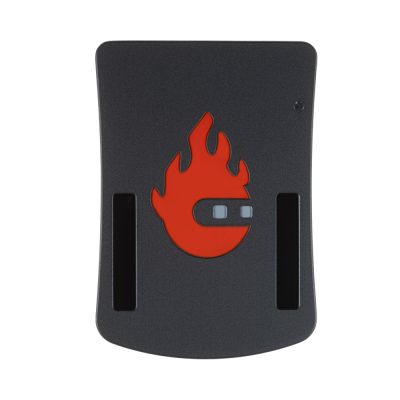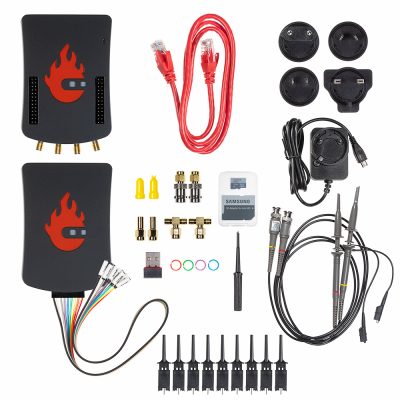Description
SDRlab 122-16 was developed specifically for software-defined radio and more demanding RF applications.
It comes with two 16-bit 50-ohm inputs and 14-bit 50-ohm outputs, Xilinx Zynq 7020 FPGA for real-time processing capabilities plus an ultra-low phase noise 122.88MHz clock which makes it more hardware-compatible with HPSDR compliant applications. RF inputs are optimised for minimal distortion, noise and crosstalk which significantly improves reception and broadens the choice of antenna. With the SDRlab 122-16 Standard Kit, you can unleash your creativity and explore the world of software-defined radio. Whether you are a hobbyist or a professional, this kit provides the tools you need to build your own SDR transceiver with ease.
Key features:
- Credit-card-sized RF signal acquisition and generation platform
- Dual-Core ARM Cortex-A9 MPCore Xilinx ZYNQ 7020 SoC (CPU & FPGA)
- FPGA and CPU integration for enhanced performance
- Open-source design for customization and flexibility
- Ethernet connectivity
- Configurable units of measurement for seamless integration
- Ideal for creating SDR transceivers
- Innovative lab tool for various applications
- Two simultaneous fast analog inputs and two outputs
- Possibility of integration into own system/product
- Open-source software code
- Works with Linux, Windows PC, Android, IOS, basically anything with a web browser
- Free web apps (oscilloscope & signal generator, spectrum, logic analyzer, SDR, VNA)
- Can be controlled remotely using C, LabVIEW, MATLAB, Python, or Scilab
- Can be programmed to meet custom needs
Applications:
- Software-defined radio
- Reverse beacon network (RBN)
- Skimmer server
- Communications
- Diversity radio systems
- RF HF applications
- Space and military RF applications
- FFT analysis and signal measurement
- Environmental electromagnetic measurements
- Universal test platform for RF prototyping
What is in the box
- Red Pitaya SDRlab 122-16 digitiser board
- SD card (16GB, class 10)
- Ethernet cable (1m)
- Power supply (5V, 2A)
Tailored for SDR & other RF applications, HF and 50MHz bands
No DC coupling! minimum RF Input frequency (-3dB): 300kHz
- Comes with two 16 bit ADCs 50 ohm inputs; 14 bit DACs 50 ohm outputs
- Three times bigger dual-core ARM Cortex A9 + Xilinx Zynq 7020 FPGA
- Bigger FPGA provides more real-time processing capabilities
- Hardware compatible with HPSDR
- Improved distortions, dynamic range, sensitivity, noise & crosstalk
